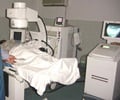The dreaded white blood cell chemistry known to damage kidneys used for transplants may also help prevent such damage
A recent study in genetically engineered mice has revealed that the dreaded white blood cell chemistry known to damage kidneys used for transplants may also help prevent such damage, according to scientists at Johns Hopkins.
Researchers have long known that when blood flow is cut off and then returned to transplanted kidneys or other organs, immune system cells called T lymphocytes produce toxic natural chemicals that contribute to ischemic reperfusion injury (IRI). Nature cannot distinguish between deliberate surgical wounds needed to remove and re-implant a donor kidney and other kinds of organ damage in which certain toxic chemicals are needed to clean up or remove bad tissue.But in the new study published in the September issue of The Journal of Immunology, the Hopkins team reports that that T cells can also play a role in reducing cellular damage in IRI kidneys, according to Hamid Rabb, M.D., medical director of kidney and pancreas transplantation at The Johns Hopkins University School of Medicine.
IRI occurs in 30 percent to 40 percent of kidneys removed from dead donors, resulting in lower kidney survival rates, shortened kidney life and a cost increase of approximately $20,000 per patient from the initial hospital stay and treatment alone, according to Rabb. Scientists therefore are interested in identifying means of preventing or rapidly treating IRI, but one barrier to greater understanding has been the inability to detect the lymphocytes in the kidney during the first critical six hours after blood flow is returned.
In the Hopkins study, designed to try to find these cells and learn more about IRI, white blood cells were taken from mice that had undergone experimentally induced IRI. These cells were injected into mice engineered without a thymus gland, which produces T cells. A comparison group of genetically engineered mice got no injections.
After the researchers temporarily stopped blood flow to kidneys in mice in both groups for 30 minutes, they discovered that the kidneys in the injected mice were improved compared to the other group of mice.
This was an unexpected result, says Rabb. For years we have known that T cells play a role in IRI, but we assumed it was always a negative role; now we know they play a protective role as well.
Advertisement
T cells are part of our immune system, and our immune system is designed to protect us from injury. Whats surprising here is that practical experience over the years has taught us that when the immune system is activated, we have increased cell damage, says Rabb.
Advertisement
The study showed elevated levels of T cells in the kidneys three hours after IRI compared to the normal mice. It also showed elevated levels of the chemicals tumor necrosis factor alpha (TNF-alpha) and interferon gamma (IFN-gamma), which are known to produce cellular damage in kidneys. These chemicals are produced by T cells. The mice that underwent fake surgery also had an elevated level of T cells when compared to the normal mice, but these cells did not release TNF-alpha and IFN-gamma and did not cause injury to the kidneys.
In this case it appears as though the surgery triggered the movement of T cells to the region, but since there was no ischemia, these cells did not produce TNF-alpha and IFN-gamma, says Rabb. This only further illustrates the complexity of the role T cells play in IRI. Source: Eurekalert
Source-Eurekalert
SRM







